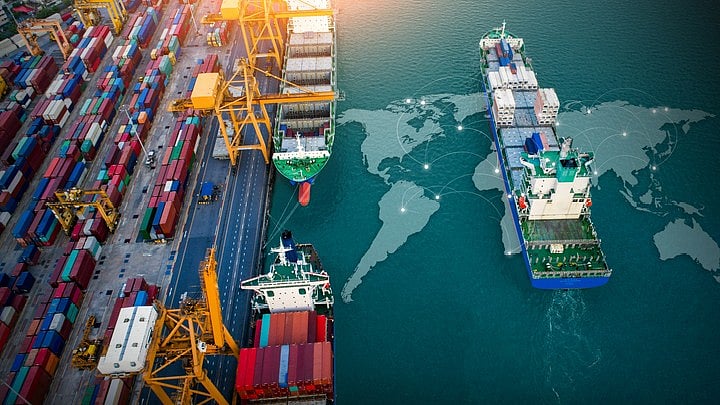
Representative image of a trade corridor.
Credit: iStock Photo
In all the brouhaha over tariffs and defence deals during Prime Minister Narendra Modi’s visits to the United States and France, the revival of the India Middle East Europe Economic Corridor (IMEC) has got pushed to the background.
A project that had gone under the radar over the past year has now suddenly come back into the limelight as both Paris and Washington seem set to push forward with implementation. Italy is equally enthusiastic and seeks to promote its ports as gateways to Europe. The recent surge of interest in IMEC augurs well for a scheme that could well overshadow China’s vaunted Belt and Road Initiative (BRI).
India announced the IMEC project with much fanfare at the summit concluding its G20 presidency in September 2023. The ambitious plans immediately ran into a roadblock with the Israel-Palestine conflict erupting in the following month. As a result, the only forward movement so far on the proposed east-west corridor has been the conclusion of a framework agreement between India and the United Arab Emirates (UAE). This envisages development of a logistics platform and supply chain services to handle all types of cargoes moving through the corridor.
It is also important to understand the contours of the project. The IMEC aims to create a fresh trade route between India and Europe going through West Asia but without accessing the Suez Canal. The plan is to create port and railway infrastructure to move cargoes in a seamless manner to avoid the risk of disruption by regional conflicts. The railway and maritime corridor will pass through the UAE, Saudi Arabia, Jordan, and Israel. The eastern segment will connect India to the Persian Gulf and the northern corridor will link the Gulf to Europe.
A memorandum of understanding on the project has so far been signed by India, the US, the UAE, Saudi Arabia, France, Germany, Italy, and the European Union.
Development of infrastructure for the corridor has not made headway largely due to the depredations of the Houthis on merchant shipping in the Red Sea region. But these supply disruptions have only served to enhance recognition of the need for creating the IMEC. The urgency of developing a safe and secure transportation route has become even greater in the wake of these geopolitical tensions. In the absence of such a route, it will be difficult for essential trade flows to move without any hindrance from India to West Asia and on to Europe and vice versa.
The corridor was high on the agenda during talks between Modi and French President Emmanuel Macron with a trip to Marseille becoming an occasion for the host to highlight the port’s potential of becoming the gateway for trade from the IMEC to enter the EU. Which port will play this role has yet to be decided, however, as Italy has positioned Trieste to become the European entry point. There are bound to be some tough negotiations on this score. For India, the all-weather port of Vadhavan in Maharashtra has been slated to be the take-off point of the corridor.
The fact that the Donald Trump administration is also on board with the project is heartening and reflects a continuity with the Joe Biden regime which was a big supporter of the initiative. What is interesting is that the progress of the IMEC has been linked with the I2U2 group, which is also called the ‘West Asian Quad’.
This reflects deepening collaboration between India and the US on strategic issues, especially in regions where there is a potential for rising geopolitical tensions. The joint statement issued at the end of the Modi-Trump meeting equates the IMEC and the I2U2 (India, Israel, the UAE, and the US). The plan is to convene partners from the IMEC and the I2U2 group within the next six months to announce new initiatives.
The fact that the IMEC has been accorded priority in Modi’s talks with both Macron and Trump is all to the good. It is bound to ruffle China’s feathers as these groupings come as a counter to the BRI. What is more significant, however, than merely being a competitor to the BRI is that the IMEC can emerge as a risk-proof route for global supply chains criss-crossing from India and Europe.
At the same time, the initiative continues to face many challenges. Finance is one, given that so far fund commitments have not been adequate for the task. It will also need multilayered collaboration among the many countries involved in developing infrastructure for the corridor. Yet that India, the US, and France in tandem with the Gulf states are determined to implement the pathbreaking project indicates that this vision may ultimately transform into a concrete reality.
Sushma Ramachandran is a senior journalist.